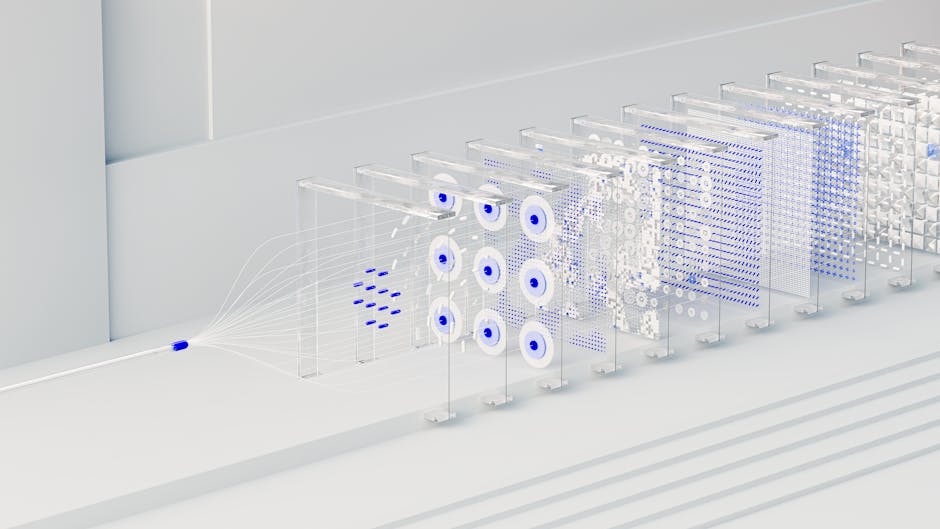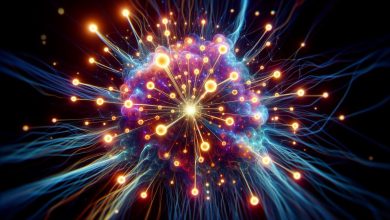
Fundamentals of Generative Adversarial Networks
Generative Adversarial Networks (GANs) operate on the fundamental principle of pitting two neural networks against each other to produce new, synthetic instances of data that can pass as real. The core components of a GAN are:
- The generator, which creates data that appears to be drawn from a genuine dataset.
- The discriminator, which evaluates the data and attempts to distinguish between real and fake instances.
The training process involves the generator receiving a random input vector and transforming it into synthetic data. The discriminator evaluates this generated data alongside real data from the training set, outputting a probability indicating whether the input is real or fake. This feedback is used to update both networks: the generator adjusts its parameters to produce more convincing data, while the discriminator fine-tunes its ability to spot fakes.
GANs typically employ deep learning architectures such as convolutional neural networks (CNNs) for image-related tasks. The generator network might consist of layers designed to upsample and refine image features, while the discriminator comprises layers that downsample and extract critical features for classification.
The applications of GANs are extensive, including creating photorealistic images, enhancing image resolution, generating synthetic medical images for research, and producing artwork and animations. However, the same capabilities that make GANs powerful also pose ethical considerations, particularly regarding the generation of deceptive data, known as deepfakes.

Applications of GANs
GAN applications span multiple fields, significantly enhancing various domains through their unique capabilities to generate highly realistic synthetic data.
- Healthcare: GANs have demonstrated their potential by generating synthetic medical data that aids in diagnostics and research, assisting in early disease detection and simulating various medical conditions.
- Art and Creative Industries: Artists and designers use GANs to explore new artistic styles and generate novel artworks.
- Scientific Research: GANs play a critical role in advancing scientific research by creating synthetic data for simulations and theoretical experiments, such as generating new molecular structures or predicting properties of novel compounds.
- Automotive and Aerospace: These sectors harness the power of GANs for simulating various conditions and scenarios for training autonomous systems.
- Gaming: The gaming industry uses GANs to create diverse and complex characters, terrains, and environments, enhancing gaming experiences.
- Facial Recognition and Authentication: GANs are revolutionizing these fields by generating diverse facial data, improving the accuracy and reliability of these systems.
As GAN technology continues to evolve, its applications will undoubtedly expand, driving advancements in countless industries.
Challenges and Ethical Issues
While GANs offer remarkable capabilities, they are not without challenges and ethical issues.
Training Instability
One primary challenge is training instability, which involves a delicate balance between the generator and discriminator networks. Achieving equilibrium during training requires careful tuning of hyperparameters and innovative training techniques.
Bias in Generated Data
Bias in generated data is another pressing concern. If the training data contains biases, these can be amplified in the generated outputs. Addressing data bias involves ensuring the training datasets are inclusive and representative of varied populations.
Ethical Concerns and Misuse
Ethical concerns surrounding GANs largely stem from their potential misuse. The ability to generate hyper-realistic synthetic data has led to the rise of deepfakes, which can be employed to spread misinformation and manipulate public opinion. Mitigating these ethical issues requires developing robust detection tools, evolving legal and regulatory frameworks, and fostering a culture of transparency and accountability among developers and users of GAN technology.
Mode Collapse
Mode collapse is another critical issue, where the generator produces a limited variety of outputs, focusing only on a few modes of the data distribution. This leads to a lack of diversity in the generated examples. Researchers are actively working to address mode collapse through techniques such as unrolled GANs and improved objective functions.
Addressing these challenges and ethical concerns is vital for the responsible and beneficial advancement of GAN technology. Ongoing research and collaboration among stakeholders will be essential in ensuring that GANs are used ethically and effectively.
Governance and Regulation of GANs
In the sphere of governance and regulation of GANs, the approaches can be broadly categorized into efforts from the private sector and government bodies. These approaches aim to balance innovation with ethical considerations and societal impacts.
Private Sector Approaches
- OpenAI has adopted a controlled release strategy for its generative models, limiting access and monitoring the use of their API to minimize misuse.
- Stability AI has taken a more open-source approach, democratizing access to GAN technology by releasing the weights of their models to the public. This open-source model encourages collaboration and innovation but also raises concerns about potential misuse.
Public Sector Efforts
On the public sector front, government bodies are beginning to address the unique challenges posed by GANs.
- In the United States, legislative efforts have been initiated to counter the misuse of deepfake technology.
- The European Union is also taking proactive measures to regulate AI, including GANs, with the proposed AI Act, which emphasizes transparency, safety, and accountability.
Real-World Applications
Real-world applications illustrate the effectiveness of these regulatory approaches. Social media platforms have implemented policies and tools to detect and label AI-generated content, enhancing user awareness and preventing the spread of false information. Collaborations between tech companies and academic institutions also play a crucial role in developing advanced detection technologies.
As the field continues to evolve, ongoing collaboration between stakeholders and the implementation of robust policies will be essential in ensuring the responsible and beneficial advancement of GAN technology.

Future Directions for GAN Research
As we look ahead, the future of GAN research holds promise for transformative advancements across various domains. Researchers are exploring innovative techniques to stabilize the training process, which is crucial to maintaining the balance between the generator and discriminator networks. Methods like progressive GANs, which start training on low-resolution images before gradually increasing the resolution, have shown early success in producing higher quality outputs.
Improving the diversity of generated data and preventing mode collapse remains a critical research goal. Researchers are experimenting with techniques like minibatch discrimination and the use of multiple generators to encourage diversity in the generated samples. These approaches aim to ensure that GANs can generate a wide array of unique outputs, enriching the data generation process.
The application of GANs in new domains is an exciting frontier. Beyond their established uses in image and video generation, GANs are being explored for their potential in fields such as:
- Natural language processing
- Genomics
- Materials science
For instance, GANs could be employed to generate realistic synthetic data for training AI models in healthcare, addressing issues of data scarcity and enhancing the robustness of diagnostic algorithms.
Integrating GANs with other AI models to leverage their combined strengths is another promising direction. Hybrid models that fuse GANs with transformers, for example, could significantly enhance the capabilities of AI systems in generating high-quality text, images, and other forms of data. This integration could lead to breakthroughs in creating more nuanced and contextually accurate synthetic media.
GANs also have the potential to improve data quality and reduce the data required for training AI systems. By using GANs to generate high-fidelity synthetic data, researchers aim to reduce the dependency on large labeled datasets, making AI development more efficient and accessible. This approach not only lowers the barriers to entry for developing AI models but also mitigates privacy concerns associated with using real-world data.
Enhancements in GAN architectures are also on the horizon. Researchers are exploring new neural network designs, such as attention mechanisms within GANs, to improve the fine-grained generation of complex features in images and other data types.1 These architectural innovations promise to push the boundaries of what GANs can achieve, enabling the creation of even more realistic and detailed synthetic media.
Addressing the ethical and societal implications of GAN-generated content remains a priority as well. As GAN technology advances, it is imperative to develop robust mechanisms for detecting and mitigating the potential misuse of synthetic media. Continued research on techniques for identifying GAN-produced content, coupled with the implementation of ethical guidelines, will be essential in fostering the responsible use of this technology.
The future directions for GAN research are brimming with possibilities. Through ongoing advancements in training methods, applications in novel domains, and continuous innovation, GANs are poised to become even more integral to the development of artificial intelligence.
The interplay between the generator and discriminator in GANs forms a powerful framework for unsupervised learning, driving the creation of highly realistic synthetic data. This fundamental approach has opened up new avenues in machine learning, pushing the boundaries of what AI can achieve.







